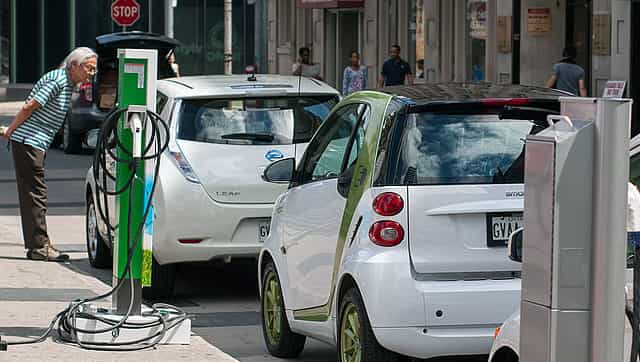Aiming to fight the climate change crisis, the race to achieve clean mobility in India has gained pace over the past few years. In 2022, the adoption of Electric Vehicles (EVs) registered in the country was a whopping 210 per cent in overall EV sales. A total of 14 lakh electric vehicles were plying on Indian roads. However, one of the major reasons behind the exponential growth is the result of the several initiatives taken by the government including the FAME II scheme, tax benefits, and an incessant push towards localization of EV components to make its purchase economical for the masses. The evolving EV technology is resulting in futuristic products for both personal and commercial use.
But the biggest question that arises is, Whether the efforts made to date are enough to continue the streak of EV adoption. Unfortunately, not. Despite all efforts made by both the EV industry and the government, Internal Combustion Engine (ICE) vehicles are still outnumbering EVs – which stand at an adoption rate of only 2 per cent. EV industry’s wish list The Union Budget for the financial year 2023-2024 is scheduled to be tabled by Finance Minister Nirmala Sitharaman on 1 February. The hope is for an exemption of GST on Li-Ion cell components, cells, and battery packs to enable India to achieve the EV target set by the government for 2030 in the upcoming Budget 2023-2024. The government should consider revising several policies including import duties on the product, basic customs duties, and GST rates on Li-on cell components, li-ion cells, li-ions battery packs, and EV components. Apart from this, keeping in view the volume of imports and the time period, customs duties should also be revised. In order to support the EV battery makers, the government should exempt of GST on Li-on cell components, cells, and battery packs as that would further aid battery manufacturers in developing EV batteries. With an intention to scale battery manufacturing, the government should look at offering sale-based incentives to battery assemblers. As far as the adoption of EVs in logistics sectors is concerned, the introduction of substantial reduction of taxes and implementation of incentives for the logistics and last-mile service providers (commercial EVs) will expedite EV adoption in the sector going forward. Another step to expedite mass adoption of EVs is by offering Battery as a Service (BaaS). It will prove to be a game changer by helping in reducing the upfront cost of EVs by allowing buyers to pay for battery use rather than for purchasing the battery upfront. BaaS for fixed batteries combined with Mobility as a Service (MaaS) would result in faster EV adoption for last-mile fleet operation businesses. A major drawback that the EV industry is facing the high upfront cost of EV’s. The government should consider including EVs in Priority Sector Lending (PSL) as it would make electric vehicles more affordable for the masses. Finally, the government should take into consideration the technological prowess of the vehicles and battery technologies with regard to longevity, safety, and fast charging, ensuring only the best quality products for the end users instead of limiting its policies for the incentives and financial enablers to the volumes of production as promised by the manufacturers. Current scenario of EV industry in India The Indian EV industry has been growing rapidly in the past few years as around 350 EV manufacturers emerged in the country including leading Original Equipment Manufacturers (OEMs) and emerging start-ups. The EV industry witnessed growth not only in rising OEMs but has also expanded to EV component manufacturers showcasing their ability in innovating advanced battery technologies which are made in India, for India. The highest EV adoption rate in the country spiked more than 4 per cent in the year 2022, with registered 14 lakh electric vehicles plying on the roads of India. The major reasons behind the significant increase in adoption rates of the EV in India were the subsidies and demand incentives introduced by the government under the FAME II scheme. FAME II Scheme – allocation of Rs 10,000 crores in the budget for this scheme by the government aiming to support 10,00,000 2W EVs, 5,00,000 3W EVs, 55,000 passenger EVs, and 7000 electric buses. How FAME II Scheme According to the data of December 2022, FAME II has approved over 130 EV models from over 50 registered OEMs across 2W, 3W, and 4W platforms. Taxation slab for EV industry If we talk about the tax scenario in the EV industry, the Basic Customs Duty (BCD) and import duty on li-ion battery packs and li-ion cells is 20 per cent and 15 per cent, respectively. The government has set a 5 per cent GST rate on EV purchases (personal use), a 5-10 per cent import duty, and an 18 per cent GST rate on li-ion cell components. These factors play a vital role in the augmentation of EV sales and manufacturing. The writer is Director, and Co-Founder at Log9 Materials, a Bengaluru-headquartered deep-technology, and advanced battery technology start-up. He tweets @log9materials. Views expressed are personal
Read all the Latest News , Trending News , Cricket News , Bollywood News , India News and Entertainment News here. Follow us on Facebook, Twitter and Instagram.


)

)
)
)
)
)
)
)
)



